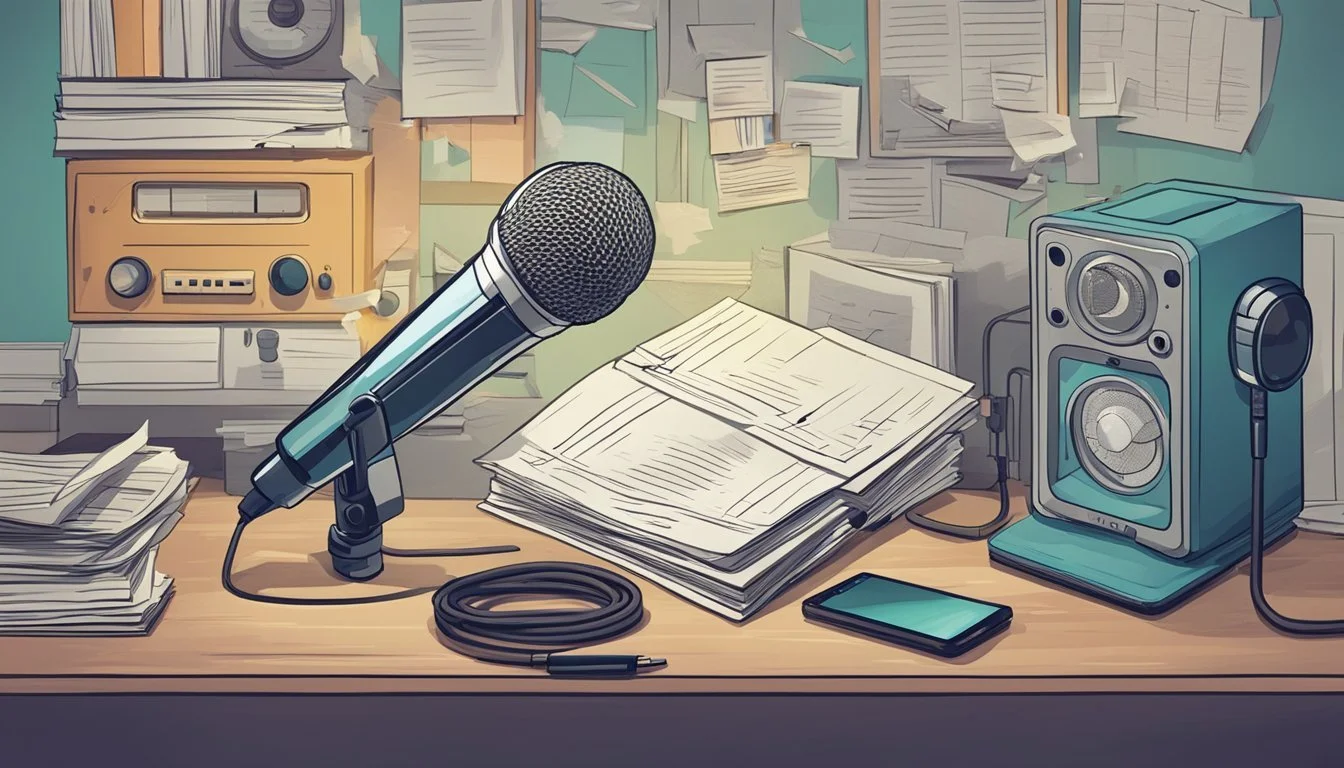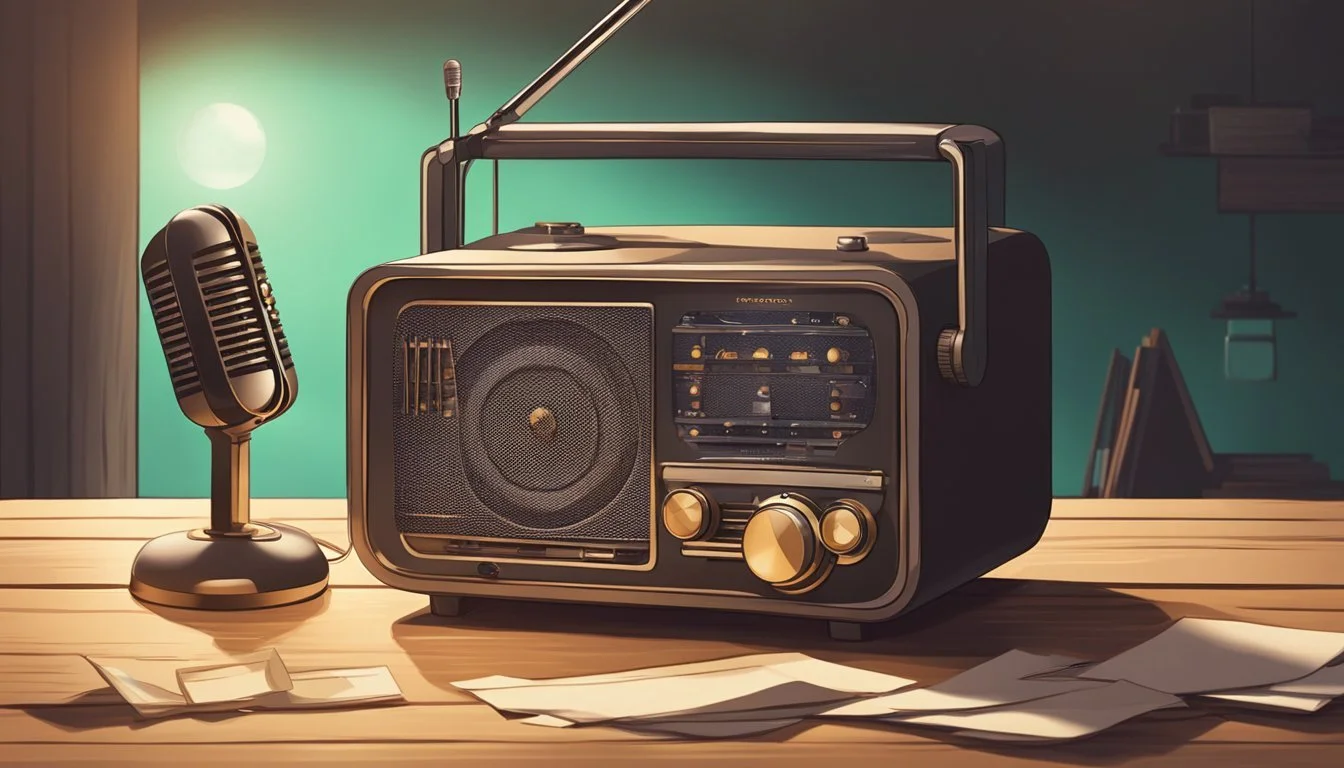Exploring the Future of PTSD Radio Manga Series
PTSD Radio, a horror manga anthology by Maasaki Nakayama, captivated readers with its unsettling tales centered around the ancient legend of Ogushi, the God of Hair. The series gained a following for its bite-sized horror stories and unconventional structure, drawing comparisons to the works of Junji Ito.
Despite its popularity, PTSD Radio has been on an unofficial hiatus since 2018, with no new chapters published in over four years. The abrupt stop in publication has left fans wondering about the future of the series. Rumors circulate that Nakayama ceased work on the manga due to a series of mysterious, disturbing incidents allegedly experienced by the artist.
The uncertain fate of PTSD Radio has sparked discussions among horror manga enthusiasts. While the last published volume ends with a "to be continued" note, the defunct status of its original publishing magazine, Nemesis, further complicates the possibility of continuation. Fans remain hopeful for news about the series' future, even as they speculate about the circumstances surrounding its sudden pause.
Background of PTSD Radio
PTSD Radio emerged as a haunting horror manga anthology that captivated readers with its unsettling narratives and disturbing artwork. The series delves into the realm of supernatural terror, centered around an ancient legend of a being known as Ogushi.
Creation and Conceptualization
PTSD Radio was conceptualized as a collection of interconnected horror stories. The manga explores themes of fear, trauma, and the supernatural through its anthology format. Each tale contributes to a larger, overarching narrative that slowly unravels throughout the series.
The concept revolves around "the God of Hair," an entity that serves as a focal point for the various frightening encounters. This unique premise sets PTSD Radio apart from other horror manga, offering readers a fresh and chilling experience.
Masaaki Nakayama's Influence
Masaaki Nakayama, the creator of PTSD Radio, brought his distinctive artistic style and storytelling approach to the series. Known for his ability to evoke fear through visual elements, Nakayama's illustrations play a crucial role in the manga's impact.
His use of disorienting layouts and grotesque imagery heightens the sense of unease throughout the anthology. Nakayama's previous works in the horror genre influenced PTSD Radio's tone and aesthetic, contributing to its reputation as a deeply unsettling reading experience.
The artist's skill in crafting atmospheric tension and visceral horror scenes has earned PTSD Radio recognition among fans of the genre.
Artistic Style and Aesthetics
PTSD Radio's distinctive visual style sets it apart in the horror manga genre. The series employs haunting imagery and intricate details to create an unsettling atmosphere.
Visuals and Illustrations
PTSD Radio features stark black and white illustrations with heavy use of shadow and negative space. The art style emphasizes contrasts, creating eerie scenes that play with readers' perceptions. Characters are often depicted with distorted features or as shadowy figures, enhancing the sense of unease.
Detailed backgrounds add depth to the panels, with intricate patterns and textures that draw the eye. The manga uses unconventional panel layouts to disorient readers and heighten tension. Close-up shots of eyes, hands, and other body parts are common, adding to the unsettling tone.
Comparative Analysis with Junji Ito's Works
PTSD Radio shares some stylistic elements with Junji Ito's horror manga, particularly in its use of body horror and psychological terror. Both artists excel at creating deeply disturbing imagery that lingers in readers' minds.
Ito's works like "Uzumaki" and "Shiver" are known for their intricate, detailed art style. PTSD Radio employs similar techniques but with its own unique flair. While Ito often focuses on spiral motifs and cosmic horror, PTSD Radio leans more into psychological trauma and ghostly apparitions.
Both artists use heavy inking and bold lines to create stark contrasts. However, PTSD Radio's style is generally grittier and more raw compared to Ito's polished look.
Themes and Horror Elements
PTSD Radio masterfully weaves psychological terror with supernatural elements to create a uniquely haunting experience. The manga explores deep-seated fears through fragmented vignettes and recurring motifs.
Exploration of Fear and Trauma
PTSD Radio delves into the darkest corners of the human psyche. The title itself alludes to post-traumatic stress disorder, hinting at the lasting impact of terrifying experiences. Each vignette presents a new facet of fear, from common phobias to more abstract existential dread.
The manga often blurs the line between reality and nightmare. Characters find themselves trapped in situations that escalate from mundane to horrific in mere moments.
Trauma manifests in unexpected ways throughout the series. Seemingly innocuous objects or situations can trigger intense reactions, mirroring the unpredictable nature of PTSD symptoms.
Supernatural and Haunting Motifs
Ghostly apparitions and malevolent spirits feature prominently in PTSD Radio. These entities often embody unresolved traumas or represent lingering guilt and regret.
The manga introduces a recurring god-totem, serving as a focal point for supernatural occurrences. This enigmatic figure ties various stories together, hinting at a larger, more sinister force at work.
Curses play a significant role in many vignettes. Characters find themselves plagued by inexplicable phenomena, often stemming from past actions or encounters with the unknown.
Psychological Horror and Jump Scares
PTSD Radio excels at building tension through psychological horror. The manga often leaves readers questioning what is real and what is imagined, creating a pervasive sense of unease.
Jump scares are employed effectively, catching readers off guard with sudden, terrifying revelations. The visual style enhances these moments, using stark contrasts and unexpected panel layouts to maximize impact.
The series plays on common fears and phobias, amplifying them to create visceral reactions. Claustrophobia, fear of the dark, and fear of the unknown are all explored in chilling detail.
Structure and Storytelling Techniques
PTSD Radio employs distinctive narrative approaches to create an unsettling atmosphere. The manga series utilizes short, interconnected tales and recurring themes to build a cohesive horror experience.
Use of Vignettes
PTSD Radio's structure revolves around vignettes - brief, self-contained horror stories. These short narratives allow for quick, impactful scares while building a larger, interconnected world. The vignette format draws inspiration from Fuan no Tane, another horror manga by Masaaki Nakayama. Each tale in PTSD Radio typically spans a few pages, focusing on a single eerie encounter or supernatural event.
The brevity of these stories heightens tension, leaving readers unsettled as they move from one chilling scenario to the next. This approach also allows for diverse storytelling, exploring various horror subgenres and urban legends within a single volume.
Character and Plot Development
Despite its vignette-based structure, PTSD Radio maintains character continuity and plot progression across volumes. Recurring characters and themes weave through the seemingly disparate stories, creating a sense of cohesion. The manga introduces elements like the mysterious god-totem, which appears sporadically throughout the series.
Character development in PTSD Radio is subtle but impactful. Protagonists often face supernatural horrors that leave lasting psychological scars. This approach aligns with the series' exploration of trauma and its effects. The manga occasionally delves into more extensive character arcs, such as autobiographical tales that provide deeper insights into the horror's impact on individuals.
Cultural Impact and Reception
PTSD Radio has made significant waves in the horror manga community, garnering attention for its unique approach to psychological horror. The series has built a dedicated following and received critical recognition for its storytelling and art style.
Fan Base and Community
PTSD Radio has cultivated a passionate fan base within the horror manga community. Readers appreciate the series for its unsettling atmosphere and exploration of psychological trauma. Online forums and social media groups dedicated to discussing the manga have sprung up, allowing fans to share theories and interpretations of the complex narrative.
The manga's distinctive visual style has inspired fan art and cosplay, further cementing its place in horror manga culture. Some fans have even created audio adaptations of certain chapters, enhancing the eerie experience for others.
Critical Acclaim and Reviews
Critics have praised PTSD Radio for its innovative approach to horror storytelling. Many reviewers highlight the manga's ability to create a pervasive sense of unease through its minimalist art style and fragmented narrative structure.
The series has received acclaim for its sensitive handling of trauma-related themes, with some mental health professionals noting its potential to raise awareness about PTSD. Several manga awards have recognized PTSD Radio for its contributions to the horror genre.
Critics particularly commend the manga's use of sound-related imagery to convey psychological distress, setting it apart from other horror titles. However, some reviewers caution that the intense subject matter may be challenging for sensitive readers.
Publication and Distribution
PTSD Radio's publication history has been marked by periodic releases and limited availability. The manga's unique distribution approach has impacted how readers access the series.
Volume Releases and Availability
PTSD Radio began serialization in 2014, with individual volumes released over the following years. Volume 1 introduced readers to the unsettling world crafted by Masaaki Nakayama. Volume 2 continued the anthology format, expanding on the horror themes.
The manga's release schedule became irregular after Volume 6. Physical copies were primarily available in Japan, with some international distribution through specialty manga retailers. Digital versions expanded access for global readers.
Nakayama's work on PTSD Radio ceased in 2018. This sudden halt left the series incomplete, with no official announcement regarding future volumes. The existing volumes remain in circulation, though availability varies by region and format.
Fans of the series continue to seek out the published volumes. The manga's cult following has kept interest alive despite the lack of new material.
Continuation of PTSD Radio
PTSD Radio's future remains uncertain, with speculation surrounding potential new volumes and directions for the horror manga series. Fans eagerly await news of its continuation.
Future Volume Speculations
PTSD Radio's last published volume was the sixth installment. Rumors circulate about the possibility of a seventh volume. Masaaki Nakayama, the manga's creator, has not made any official announcements regarding new releases.
The series went on an unofficial hiatus in 2018. Some sources suggest Nakayama experienced disturbing incidents during the manga's creation, leading to the pause. This break has fueled fan theories about potential storylines and themes for future volumes.
Readers hope for resolution to open plot threads and further exploration of the "God of Hair" mythology introduced in earlier chapters.
Potential Directions for the Series
If PTSD Radio continues, it could explore new aspects of Japanese folklore and urban legends. The anthology format allows for diverse storytelling possibilities within the horror genre.
Nakayama might delve deeper into the psychological effects of supernatural encounters, expanding on the manga's themes of trauma and fear. Character development could focus on recurring individuals or introduce new protagonists facing Ogushi's influence.
The series could also incorporate modern elements, blending traditional horror with contemporary fears. This approach might attract new readers while maintaining the manga's signature unsettling atmosphere.
Visual innovations in panel layout and art style could enhance the horror experience, pushing boundaries in manga storytelling techniques.








